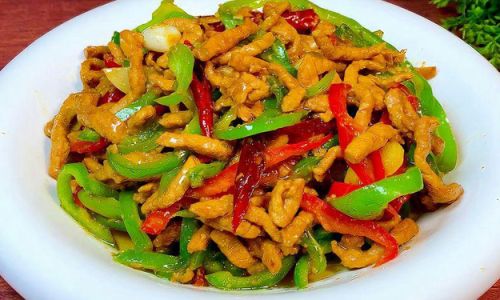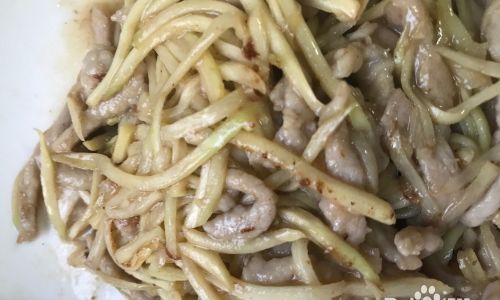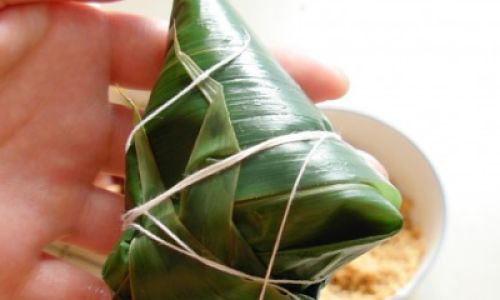Table of content
Stir-frying pork slices, commonly known as “rou si” in Chinese cuisine, is a dish that embodies the essence of quick, flavorful, and nutritious home cooking. This technique, originating from the rich culinary traditions of China, has been adapted worldwide due to its simplicity and versatility. Whether you’re a seasoned chef or a home cook eager to expand your repertoire, mastering the art of stir-frying pork slices can elevate your meals to new heights. This comprehensive guide will walk you through every step, from selecting the right ingredients to perfecting your stir-fry technique, ensuring you create a dish that is both delicious and satisfying.
Understanding the Basics
Before diving into the specifics of how to stir-fry pork slices, it’s crucial to grasp the fundamental principles of stir-frying. Stir-frying is a cooking method that involves rapidly cooking small pieces of food in a hot wok or pan with a small amount of oil. The high heat seals in juices, creates a caramelized exterior, and ensures that the dish is cooked evenly and quickly. This method is ideal for vegetables and thin slices of meat, such as pork, chicken, or beef.
Ingredients: Quality Matters
Pork Selection
The quality of your pork is paramount. For stir-frying pork slices, look for lean cuts like pork tenderloin or pork shoulder (trimmed of excess fat). These cuts are tender and have a good balance of flavor and moisture. Avoid using overly fatty cuts, as they can make your stir-fry greasy.
Marinade
Marinating the pork slices is a crucial step that adds flavor, tenderizes the meat, and ensures even cooking. A basic marinade can include soy sauce, rice vinegar, sesame oil, garlic, ginger, and a pinch of sugar or honey. The acidity from the vinegar and soy sauce helps break down proteins, making the meat more tender. The sugars caramelize during stir-frying, adding a delicious golden hue and sweetness.

Vegetables and Aromatics
Stir-fries are often a harmonious blend of meat and vegetables. Common choices include bell peppers, broccoli florets, snap peas, carrots, and baby corn. Aromatics like garlic, ginger, and scallions provide a foundational flavor that complements the pork. Fresh herbs like cilantro or parsley can be added at the end for a burst of freshness.
Sauce
A well-balanced sauce is the finishing touch that ties all the flavors together. A classic stir-fry sauce might include soy sauce, oyster sauce, hoisin sauce, rice vinegar, sesame oil, and a touch of cornstarch to thicken. Adjust the proportions to suit your taste preferences, aiming for a balance of saltiness, sweetness, and tanginess.
Preparation: The Key to Success
Slicing the Pork
Proper slicing is essential for even cooking. Freeze the pork for about 15-20 minutes until it’s partially frozen but still sliceable. This makes it easier to cut thin, uniform slices. Aim for slices that are about 1/8 to 1/4 inch thick. Thinner slices cook faster and more evenly, ensuring tender, juicy results.
Prepping Vegetables
Vegetables should be cut into similar-sized pieces to ensure they cook evenly. For instance, bell peppers can be sliced into thin strips, carrots into matchsticks, and broccoli into bite-sized florets. Blanching vegetables briefly in boiling water (followed by an ice bath to stop the cooking process) can help them cook faster and retain their vibrant color in the stir-fry.

Stir-Frying Technique: The Heat is On
Heating the Pan
Preheat your wok or large skillet over high heat until it’s almost smoking. This high heat is crucial for creating the seared, caramelized exterior of the pork and vegetables. Use a high-quality, heavy-bottomed pan that can retain and distribute heat evenly.
Adding Oil
Add just enough oil to coat the bottom of the pan—typically about 1-2 tablespoons. Peanut oil, vegetable oil, or canola oil are good choices because they can withstand high temperatures without smoking.
Stir-Frying the Aromatics
Once the oil is hot, add your aromatics—sliced garlic, ginger, and scallions. Stir-fry for just a few seconds until fragrant but not burnt. This releases their flavors into the oil, creating the foundation for your stir-fry.
Cooking the Pork
Add the marinated pork slices to the pan in a single layer, avoiding overcrowding. Stir-fry for about 2-3 minutes, tossing frequently to ensure even cooking. The pork should turn a golden brown and be cooked through but still juicy. Remove the pork from the pan and set it aside on a plate. This prevents overcooking and allows you to focus on the vegetables.

Stir-Frying the Vegetables
If needed, add a bit more oil to the pan. Add your prepared vegetables and stir-fry for 2-4 minutes, depending on their thickness and cooking time. Aim for vegetables that are crisp-tender, retaining some crunch. If you blanched your vegetables, this step will be quicker.
Combining and Sauce
Return the cooked pork to the pan with the vegetables. Pour your prepared sauce over the top, stirring quickly to coat everything evenly. Cook for an additional 1-2 minutes, allowing the sauce to thicken and everything to heat through. Be careful not to overcook, as the pork and vegetables should remain tender and vibrant.
Finishing Touches
Garnishing
Before serving, finish your stir-fry with a sprinkle of fresh herbs like cilantro or parsley. This adds a fresh, bright note that contrasts with the rich, savory flavors of the pork and vegetables.
Serving
Serve your stir-fried pork slices immediately while hot. Pair it with steamed rice or noodles to soak up the delicious sauce. A side of pickled vegetables or a light salad can provide a refreshing contrast.

Tips for Perfect Stir-Frying
- Don’t Overcrowd the Pan: Stir-frying requires space for the food to cook evenly. Work in batches if necessary.
- High Heat: Maintaining a high heat is crucial for achieving the desired texture and flavor.
- Use a Wok: A wok’s shape and material are ideal for stir-frying, promoting even heat distribution and easy tossing.
- Marinate: Never skip the marinade step; it adds flavor and tenderizes the meat.
- Practice: Like any skill, stir-frying improves with practice. Experiment with different ingredients and sauces to find what you love.
Conclusion
Stir-frying pork slices is a delightful way to enjoy a flavorful, nutritious meal in a short amount of time. By following the steps outlined in this guide, you’ll be able to create a dish that balances savory, sweet, and tangy flavors, with tender pork and crisp-tender vegetables. Whether you’re cooking for yourself, family, or friends, this versatile technique will become a staple in your kitchen. Happy stir-frying!





0 comments